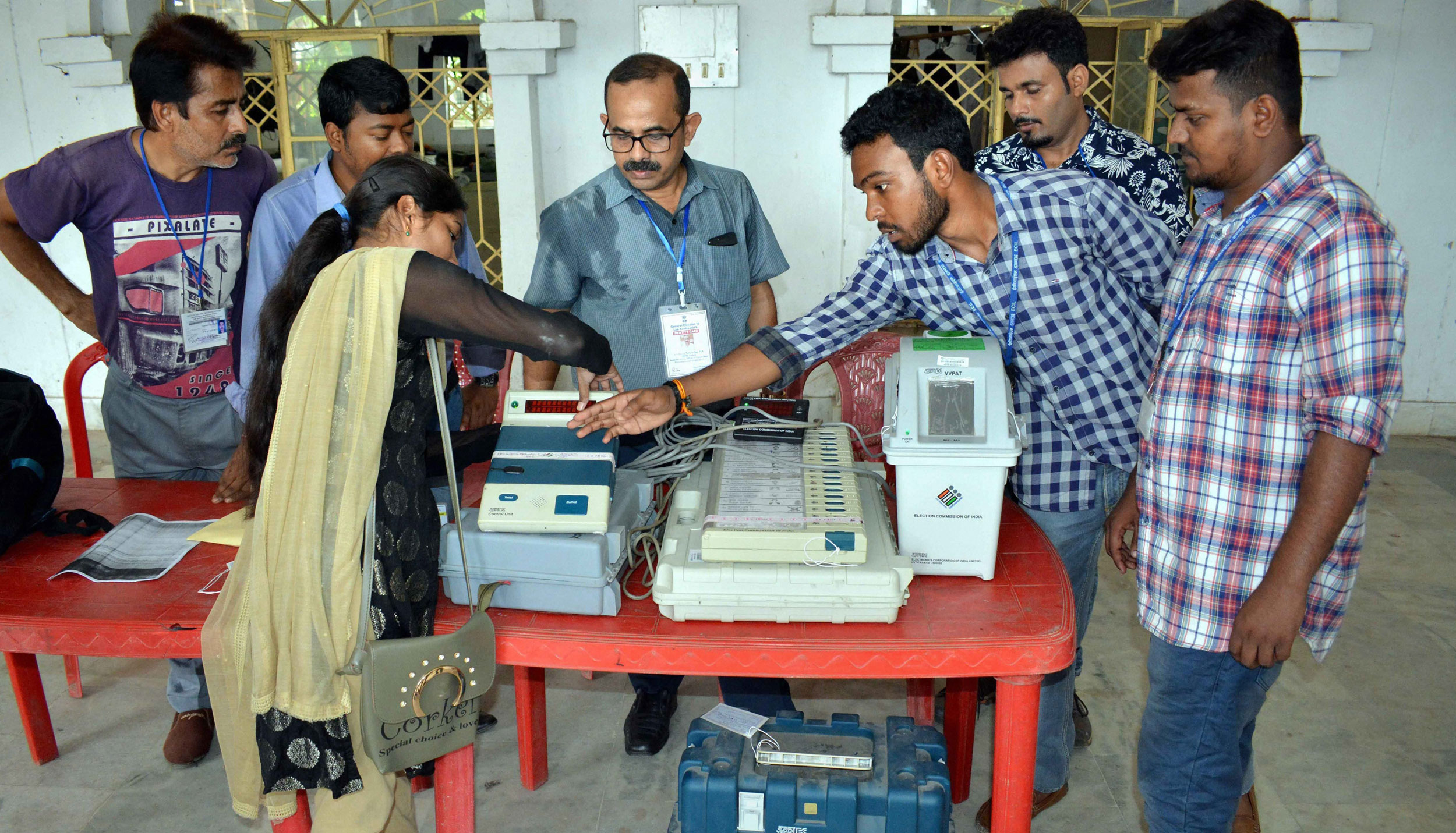A closer look at the Lok Sabha poll results in Bengal shows the ruling Trinamul ahead in 93 out of the 125 minority-dominated Assembly segments and the BJP in 23, suggesting voting largely along religious lines.
An Assembly seat gets the minority-dominated tag if Muslim voters are over 20 per cent.
The spread of the Muslim population, however, is not even and the concentration is as high as 70 per cent in some of the segments.
The results of the state’s 42 Lok Sabha constituencies can be broken down to the level of each of the 294 Assembly segments.
“The trend of polarised voting is clear. In Muslim-dominated Assembly constituencies, Trinamul got an overwhelming majority due to consolidation of Muslim votes. There is another side to this consolidation, which benefited the BJP: they got the lead in 23 segments where Hindus seemed to have voted almost en masse for the saffron party’s candidates,” said political scientist and Rabindra Bharati University and faculty member Biswanath Chakraborty.
Though religious polarisation has often played a role in elections in some areas in the past, the division this time was sharp and spread across Bengal.
The fact that polarisation was about to determine poll outcome became clear in the campaign itself as Prime Minister Narendra Modi and BJP chief Amit Shah made it a point to mention in their rallies issues like the NRC, infiltration from Bangladesh, “Trinamul’s policy of Muslim appeasement, problems in holding Durga Puja and Saraswati Puja and Mamata’s love for Pakistan”.
Chakraborty and his team of researchers have contended that Mamata’s anti-Modi campaign made Trinamul the most favoured party among Muslims.
Such consolidation, however, was not a one-way traffic. According to Chakraborty, the consolidation of Muslim votes in Mamata’s favour triggered a similar coalescing of Hindu votes towards the BJP.
“The state has never witnessed such polarised two-way voting,” said Chakraborty.
In the 2016 Assembly polls, Trinamul was ahead in 85 minority-dominated Assembly segments. The Left and the Congress — which fought the election in an alliance — were ahead in 39 and the BJP in only one.
In the Lok Sabha polls this time, the lead of the Congress shrunk to nine Assembly seats. The Left did not lead in any.
“This means a significant majority of those who had voted the Left and the Congress three years ago chose Trinamul or the BJP. This choice was largely driven by religion,” said Chakraborty.
The higher the concentration of Muslims, the higher the probability of a Trinamul victory. This is borne out by the fact that Mamata’s party was ahead in 59 of the 65 Assembly constituencies where Muslims comprise over 45 per cent of the electorate.
The remaining six — three each in Behrampore and Malda South — have gone to the Congress, Muslims’ traditional favourite.
But some sounded caution before drawing sweeping conclusions. “I personally think that in some places, Muslims have voted the BJP… Minority voters generally tend to align with the ruling party to enjoy its patronage. So the possibility of Muslims, at least in some places voting for the BJP, cannot be ruled out,” veteran political scientist Prashanta Roy said.
According to him, the BJP would try to win over Muslim voters to prove it has wide support. “Reaching a conclusion on what’s the right assessment would require a lot of research,” said Roy.
While Roy still has some doubts, many others insist polarisation along religious lines was a key factor. Left economist Prasenjit Bose said the process started two to three years ago as the BJP always fancied its chances in Bengal — a border state with high Muslim population, where the memories of partition and the 1971 Pakistan war were still raw.
“The saffron camp used the perception that Mamata Banerjee has been appeasing the Muslims across the state… Look at the sudden spike in communal strife in different parts of the state in the last two years or so. The list is so long and includes Chandernagore, Hajinagar in Naihati, Dhulagarh in Howrah, Asansol-Raniganj, Chanchol in Malda and Basirhat,” said Prasenjit Bose, whose fledgling organisation Young Bengal tried to spread the message of communal harmony in many of these places.











